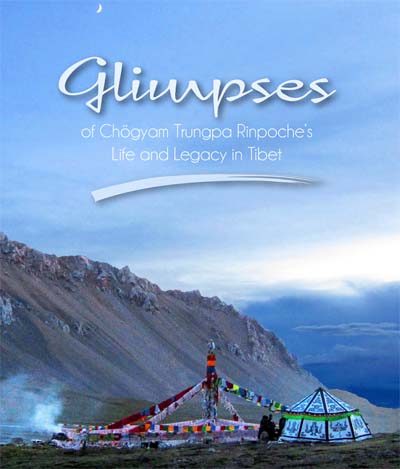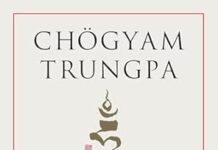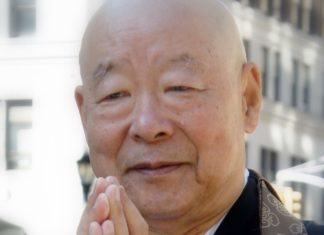[From the back cover]
This is a film about Chögyam Trungpa Rinpoche, yet all of the video and most of the photos are contemporary. Thus, those interviewed are, in effect, speaking about the role this singular man still plays in their consciousness today, long after his parinirvana, and not just about events before 1960.

According to the Tibetans of Surmang, all of us who have been inspired or touched by Chögyam Trungpa Rinpoche and his teachings are part of the same dharma family, wherever we might live.
This DVD was created as a gift for donors to the Konchok Foundation, the sponsoring entity for the Surmang shedra. The film is therefore dedicated not only to furthering awareness about the Vidyadhara’s Tibetan legacy but specifically to the re-creation of the shedra at his monastery. The Surmang shedra, an effort that was so close to his heart, has the potential to again serve as a place of learning and wisdom. We at Konchok Foundation are grateful to each of the supporters whose generosity is making this large undertaking possible.
On behalf of everyone who has contributed to this DVD, and all of us at Konchok Foundation, we would like to join the interviewees in expressing our appreciation for the life and teachings of Vidyadhara the Venerable Chögyam Trungpa Rinpoche.
The Remarkable Youth of a Vidyadhara and Sakyong
Glimpses of Chögyam Trungpa Rinpoche’s Life and Legacy in Tibet, is a 42-minute documentary that begins with a September 2011 pilgrimage by fifty of Trungpa Rinpoche’s Tibetan relatives and family friends. Led by his nephew, Karma Senge Rinpoche, they traveled to his birthplace in Geje, visited the Surmang monasteries, and toured other sites that were important in his life in Tibet.
The film is composed of video footage and still photography. It shows exquisite high mountain landscapes, fascinating interviews with people who knew Trungpa Rinpoche before his 1959 escape, and some contextual commentary by Karma Senge Rinpoche.
This documentary offers a good glimpse of the world that Trungpa Rinpoche left behind when he traveled to India and the West, as well as a poignant look at relatives and friends who still hold him in their hearts. -Andy Karr
The film includes interviews with:
Chökyi Senge Trungpa XII Rinpoche, born in 1989 in Derge, is completing his studies at Serta monastery prior to taking his seat as the abbot of Surmang Dutsi Til. A slightly longer version of the video interview with him is available via the konchok.org website.
Damchö Tenphel Rinpoche. Seven or eight years younger than his brother Chögyam Trungpa Rinpoche, he also was born in Geje. His brother was present when Damchö Rinpoche was installed as the abbot of Kyere monastery, a position that he has since resumed. Trungpa Rinpoche gives a poignant description of their final parting in Born in Tibet.
Karma Senge Rinpoche, a nephew of Chögyam Trungpa Rinpoche, wasn’t born until after his uncle had already left Tibet. He teaches at Kyere monastery and the nearby Wenchen nunnery. He is exceptionally devoted to Trungpa Rinpoche, and has traveled widely in Tibet trying to collect surviving portions of Trungpa Rinpoche’s terma or writings from his time in Tibet.
Chime Palmo became the consort of Khenpo Gangshar when he was leading the shedra at Dutsi Til. She subsequently went to Sechen with him, where she presently lives with her daughter. Her grandson is the current Gangshar Rinpoche; he has started a school for orphans not far from Sechen monastery.
Yonten Gyamtso. Born in 1926, Yonten was a monk at Surmang Dutsi Til. From April 1959 until their arrival in India in January 1960, he was with Trungpa Rinpoche for the very difficult escape from Tibet. He subsequently served as an attendant to H.H. Karmapa and to Dilgo Khyentse Rinpoche. Yonten is the father of Trungpa Rinpoche’s younger sister.
Garab. A monk at Surmang Dutsi Til before 1959, Garab was, twenty years later, able to resume his practice there. He is one of the monks participating in the Kagyu Gurtso in the Konchok Foundation’s recording.
Talha is a paternal aunt of Karma Senge Rinpoche and has worked for much of her life at Kyere monastery, where she was interviewed.
















